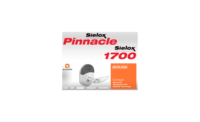When United Technologies Corp. (UTC), Hartford, Conn., (parent company of Casi-Rusco) announced that it would “end-of-life” its Secure Perfect and Picture Perfect solutions, it sent integrators — and other manufacturers such as AMAG Technology (AMAG), Torrance, Calif. — searching for a solution to provide to end users.
The Protection Bureau, Exton, Pa., the 2012 SDM Dealer of the Year, had been using the Casi-Rusco product line since the 1980s.
“We got the notification that there was going to be an end of life and, like everyone else, we were surprised,” Karen Baker, senior vice president at The Protection Bureau told SDM in an interview. “Immediately we were researching and watching for a solution to be announced.”
When AMAG, an access control and integrated security solution developer, announced it was developing a plug-and-play upgrade of Picture Perfect and other legacy Casi-Rusco and similar systems, it was a great match for The Protection Bureau because it had been an AMAG dealer for more than a decade.
The Protection Bureau signed up to be part of AMAG’s beta program developing the Symmetry Retrofit (SR) family of Access Controllers — a system designed to deliver access control technology to new and retrofit security applications.
“Protection Bureau had one of the first SR systems in their lab and was one of the first live systems as well, using the SR as part of their building’s security solution,” described David Weinbach, Symmetry product manager, AMAG. “The crew at The Protection Bureau was fantastic about not only providing feedback on what we provided, but also in identifying gaps that we were able to close before commercial launch,” he added.
Baker recalled customers, some that had been with the company more than 20 years, calling to express concern. “They weren’t quite sure at that time when the announcement came out exactly what was going to be happening, what they were going be needing. So they wanted to make sure that they had all their options. And again to provide good service for your customer you need to provide them all the options that you’re qualified to do. We’d been with Casi-Rusco since the 1980s and had been with AMAG more than a decade so we were well-qualified to analyze both solutions and present the options for our customers,” Baker said.
AMAG invited engineers from multiple companies to review what was being done, put the solution through tests, and assess if any development issues needed to be addressed. The Protection Bureau’s Drew Ogden, who was very proficient in both systems, helped with the beta testing.
“The Protection Bureau had extensive experience and a deep customer base to draw upon, and their feedback was instrumental in shaping and honing the product. In a number of areas from card formats to reader compatibility even down to LED colors, they — along with a number of other key AMAG integrators — were a huge factor in making the SR product the solution it is today,” Weinbach said. AMAG just expanded its Symmetry SR product line by introducing the SR-2000 Controller. “Customers can take advantage of AMAG’s new Symmetry SR-2000 for new and/or retrofit applications,” Weinbach said. “The beauty of the SR-2000 is that it operates side by side with the entire line of Symmetry controllers to provide flexibility, and can also be installed as part of an upgrade path for users looking to migrate to the Symmetry Security Management System,” he added.
The Symmetry SR-2000 supports F/2F reader communication protocol, along with a pin-for-pin compatibility with the legacy four-door F/2F controllers. It includes a four-door controller board with input/output (I/O), and a powerful database unit. The SR Controller can be installed in existing enclosures, eliminating the need for any wiring or termination changes.
The Symmetry SR-2000 connects to Symmetry Security Management software via LAN, WAN, RS232 or modem. Each SR-2000 controller supports 200,000 cardholders, but there is no limit to the number of cardholders a complete Symmetry SR system can support.
“It was a good scenario for us because whenever there’s something new coming out, you want to make sure that you’re trying it on yourself before you could use it for a customer. So AMAG engineers came over and worked with us and showed us the products. We installed and tested it at our building and it worked. If you keep yourself on top of technology, you can use that knowledge to provide the right solutions to your customers,” Baker described.
Editor’s Note: Since the announcement, Lenel Systems, a part of UTC Building & Industrial Systems, announced a separate migration path for users of legacy access control systems from Casi-Rusco, and support for legacy Picture Perfect and Facility Commander Wnx systems is extended through 2020.
PROJECTS in the News
Auburn University’s 1,841-acre campus hosts more than 29,000 students and faculty. Security is paramount concern, as the university has 427 buildings across the campus. When the athletic facility’s identity authentication system no longer met its requirements, Auburn immediately started researching options.
The athletic facility’s existing identity verification system allowed students and faculty to enter using swipeable access cards. Inevitably, some cards were lost or stolen, potentially allowing unauthorized personnel to enter the building. Auburn decided to replace the existing system with a more secure solution that could grow with its ever-evolving needs.
The school’s initial decision was to use hand geometry biometrics, which identifies users by the shape of their hands. Unfortunately, this system had issues with the large size of some athletes’ hands, and the swelling of the hands due to strenuous workouts. The administration went back to the drawing board to find a system that was more stable and easier to use.
After reviewing several products, Auburn University chose SRI Sarnoff’s Iris on the Move® (IOM) N-Glance™ identification system. The IOM N-Glance provides accurate, effortless, standoff identification at points of entry where secure access is required, the manufacturer described. Users simply glance at the system from a comfortable distance without having to place their eye close to a camera. The system uniquely identifies people in less than a second, and processes up to 12 people per minute. It captures iris images even if a user is wearing eyeglasses, contact lenses or most sunglasses.
The combination of accuracy and convenience made the IOM N-Glance the ideal solution for Auburn. Once registered, students, faculty and guests can enter the building using only their eyes — eliminating the need for keys or access cards that can be lost or stolen.
? ? ?
Milestone XProtect® Corporate open platform IP video management software (VMS) with XProtect® Smart Client and network cameras from Axis Communications are being deployed across all of Paul Smith’s 45 stores as part of the UK-based retailer’s first comprehensive, company-wide IT refresh. Initially the new digital video system is being used for loss prevention but once it is fully implemented worldwide by the end of 2015, Paul Smith plans to use it for business intelligence to assist retail operations management.
? ? ?
Security systems integrator Datawatch Systems completed a comprehensive access control installation and upgrade at 14 Wall Street in lower Manhattan. More than 15 perimeter and elevator readers within the building were converted during the installation. In addition, equipment was installed for communication between the building and Datawatch Systems’ 24/7/365 center strategically located in Bethesda, Md. Approximately 3,200 credentials with unique access levels are now in use every day within the building.
“As we continue to expand our presence throughout the nation, we’re equally committed to growing our dominance in New York City by further strengthening our strategic alliances with building owners,” said Sean Brown, vice president of Business Development for Datawatch Systems. “14 Wall Street is one of the city’s finest properties, and we’re extremely pleased to have been named the access control provider of record here.”
Constructed in 1914, 14 Wall Street hosts 1.04-million-square-feet of commercial space. The 37-story building is located directly across from the New York Stock Exchange. The building was designated as a New York City Landmark in 1997.
? ? ?
After feeling uncomfortable with the security situation at the Peck School of the Arts on the University of Wisconsin-Milwaukee (UWM) campus, art students themselves funded a project that led to the installation of Schlage HandKey readers at the six-building complex. Thirteen readers were placed on the exteriors of the buildings while several others were installed to manage access via certain elevators.
“We asked Anixter, our integrator, what would be a good solution to stop homeless people and strangers from entering the buildings, where art students can be found working on projects day and night,” explained Randy Trumbull-Holper, director of facilities for the Peck School of the Arts. “They, along with a locksmith on our campus, suggested that the students consider biometric hand readers.”
Once the UWM students learned that the HandKey units did not record fingerprints, they were comfortable with the biometric solution. A Schlage HandKey reader utilizes hand geometry technology. The reader simultaneously analyzes more than 31,000 points and instantaneously records more than 90 separate measurements of an individual’s hand, including length, width, thickness and surface area, to verify the person’s identity. In conjunction with entering a PIN, now only registered art students are able to gain access to the facilities.








